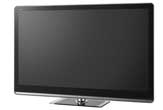Two Big Ways to Upgrade Your HDTV

If you bought that coveted 55-inch HDTV within the last several years, the excitement may be waning as new televisions with better specs and features are announced. But you don't have to buy a brand-new TV to get the benefits of these newer sets. Accessories can turn a good HDTV into a spectacular home entertainment center.
Part I: How to Turn Your TV into a Home Theater
Watching a blockbuster at home just doesn't provide the same experience as seeing it in the theater. But the difference is a lot more about the sound than the picture. The so-called home theater system is a term for surround sound speakers, the audio component of home entertainment.
Action films and other epics have more sound effects than dialogue-heavy movies, but even a conversation between Harry and Sally will sound more realistic when the clatter of a dropped fork seems to come from two booths over, a nuance that's only possible with added sound components.
Just like high definition Blu-ray movies, sound also comes in HD configurations, either Dolby Digital or DTS, and you'll need HD audio components to hear all of the sounds programmed into the soundtrack.
Most surround sound systems have rear speakers that play ambient noises and special effects, and use a center speaker that plays dialogue or vocals.
Many people tend to shy away from speakers because installation can mean drilling into walls or unsightly cords snaking around the room, but soundbars and wireless speakers can help minimize these problems.
Sign up for the Live Science daily newsletter now
Get the world’s most fascinating discoveries delivered straight to your inbox.
Budget
If you don’t want to splurge on a full surround system, a lower-price option is a soundbar, which is one elongated speaker that sits in front of the TV or can be wall-mounted above or below the TV. A soundbar uses psychoacoustic technology to emulate the effect of true surround sound by adjusting the timing and volume of the various speakers contained within the bar. Different elements of the sound tracks are bounced off walls to the side and to the back of the device to mimic speakers placed around the room.
Some soundbars include a separate subwoofer to play the lower bass frequencies close to 20 hertz, the threshold of human hearing, which would often not be audible without a subwoofer.
Soundbars are easy to install: one cable connects the speaker to the HDTV. Vizio offers an under $300 soundbar with a wireless subwoofer, so it can be placed anywhere in the room.
A step up from the soundbar is a home theater in a box (HTIB), which includes an A/V receiver for decoding, separating and assigning sound elements to speakers, and at least five speakers and a subwoofer.
Now that Blu-ray technology has dropped in price, manufacturers have begun to integrate Blu-ray players into HTIBs for only slightly more than DVD systems.
Completely wireless options still elude manufacturers but wireless rear speakers that rely on infrared light or radio waves for line-of-sight signals from the receiver are common, and eliminate the worst of the wiring problem.
A good 5.1 surround system from Sony with built-in Blu-ray, Wi-Fi connectivity to run the Internet apps and wireless rear speakers runs about $550. Professional installation for a 5.1 system, including hiding the wires, runs about $400, according to Home Theater Installs in Southern California.
Break the bank
At the upper price range, home theater enthusiasts may handpick audio components to create a system suited to the room and their viewing habits. For instance, a pair of Revel Salon 2 speakers runs about $22,000.
While not technically a soundbar, the new LCR-DM from Artisan are ultra-thin speakers that attach directly to a TV that’s 55 inches and larger. New driver technologies allow a surround sound effect, capturing sound as low as 80 Hertz and up to 800 Hertz. The enclosures, or "custom grilles," are cosmetically matched to both the height and color of your HDTV, according to Cary Christie, CEO of Artisan. The Masterpiece LCR-DM retails for $2,800, about 10 times the price of an ordinary soundbar.
Part II: Turn Your Ordinary TV into a Smart TV
It was inevitable that the TV and computer would merge into one device. This fall Google launched its Google TV that brings the full searchable Internet to the TV and manufacturers have been offering a range of HDTVs that offer selected Internet access, including integrated Netflix, Skype and Pandora Radio.
But you don't have to buy a new TV to add Internet connectivity.
Budget
Some Blu-ray players and home theater systems offer the same feature at a fraction of the cost of a new Internet-enabled TV set. Game consoles are another way to add an online component. For instance, a $60-a-year Xbox Live subscription includes Netflix, ESPN3 and Zune Music access.
Set-top boxes are another option. Boxee just launched its set-top box, aptly called Boxee Box, whose software gathers content from across Internet entertainment channels and presents it in a unified, searchable interface.
Roku also launched new devices this fall with an $80 set-top box that displays full HD 1080p content through a wireless connection. Roku has a more limited selection of content that includes Netflix, Amazon On Demand and MLB, but promises more in future firmware updates. With an Internet-connected box, you may find you can cut back on your cable services.
Break the bank
Home theater installation companies offer high-end media computer systems that can store access to thousands of DVDs and Blu-ray movies, offer Internet connectivity with instant access to Netflix streaming movies and TV, and deliver this functionality to every TV in your house.
A media center system runs about $10,000 according to Maryland Home Theater.
If you're ready to buy TV accessories, check the upcoming Black Friday and holiday sales.










